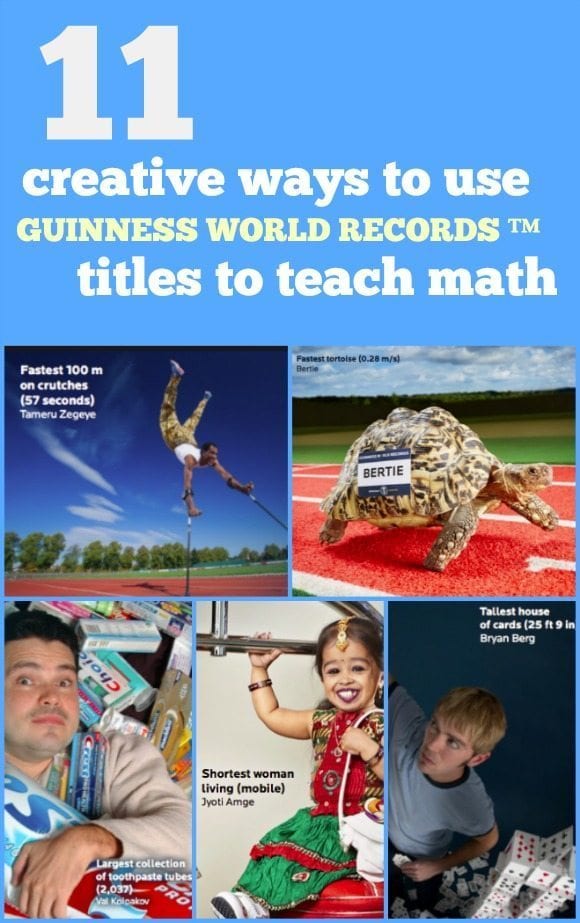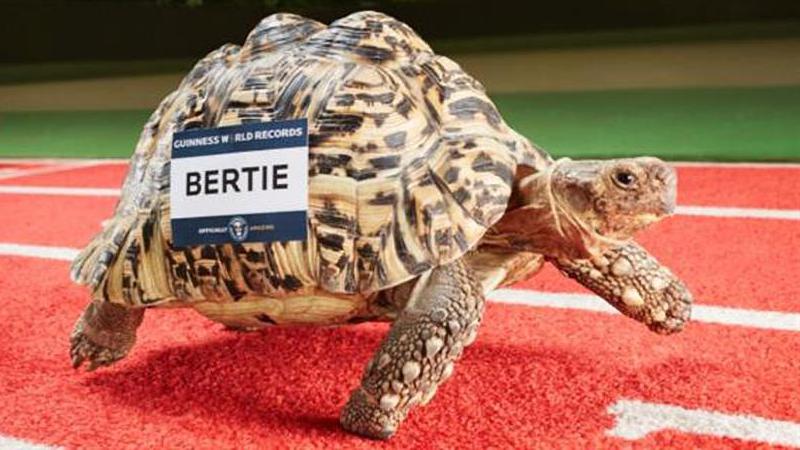Hands down, kids think one of the most fascinating books out there is the GUINNESS WORLD RECORDS Annual Book. The 2017 edition is packed with more than 4,000 records and photos, including hard-to-believe facts like the smallest owl, the elf owl, is just 4 to 5 inches tall, and fun facts like the most people riding a surfboard at one time is 66! With so many fun numbers, there are many connections to math, so we’ve gathered some of our favorite ideas for using the GUINNESS WORLD RECORDS Annual Book in your math lessons. You can find many of these lessons as well as science and language arts lessons in the FREE downloadable Teacher’s Guide.
1. Compare and Contrast
This is an important concept for students to learn throughout elementary school. Depending on age and grade level, you can make it as simple or complex as you want. Have students pull together comparisons between different records, including youngest/oldest, slowest/fastest, shortest/longest, etc. After they compare and contrast, have them do a little math to calculate the difference between the two.
What it teaches: Comparing and contrasting.
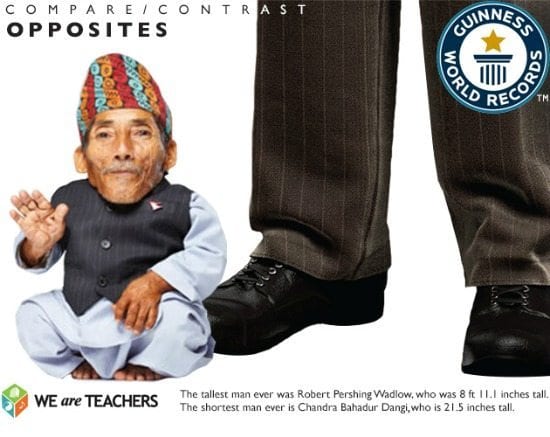
2. Learn About GUINNESS WORLD RECORDS Collections
You can find many world records about collections. Did you know the largest collection of toothpaste tubes is 2,037? Also, the largest gathering of people dressed as dogs is 439. Now, study classroom collections and have students do a count analysis. How many pencils are in the classroom? How many students are wearing blue? You can have each student or pairs of students do a count of a separate thing. Then figure out the percentages for each one. You can even do pie charts if you’re feeling ambitious.
What it teaches: Surveys, calculating percentages, pie charts.
3. Make an Animal Bar Chart
You can find all sorts of amazing facts about animals, and learning about size is one of the best. For instance, the smallest dog living is only 3.8 inches tall while the tallest is 44 inches. Students can either focus on a specific group of animals or it can be more general.
What it teaches: Creating graphs and charts.
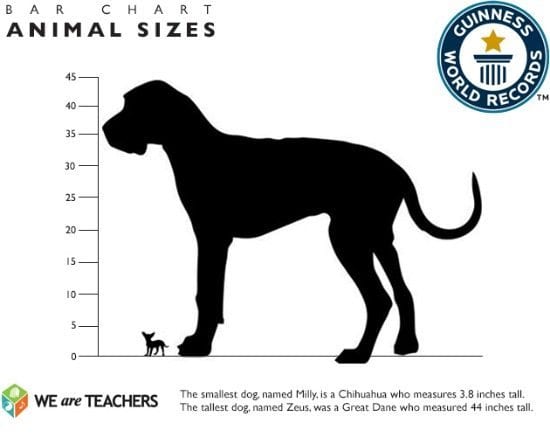
4. Find Your Own Record to Go After
It’s a lot of fun finding your own record to set. Put your students into teams, and have them research and then choose a record they’d like to break. Have them calculate what it would take to break if they beat it by 10 or 20 percent.
What it teaches: Percentages and making calculations.
5. Study Human Anomalies
In pairs, have your students measure their body parts to see how they stack up next to the big (or not-so-big) record-breakers. Some of the things they could compare include: tallest teenage boy, shortest man ever, largest feet ever, longest nose, largest hands and widest mouth.
What it teaches: Understanding measurements, applying measuring skills.
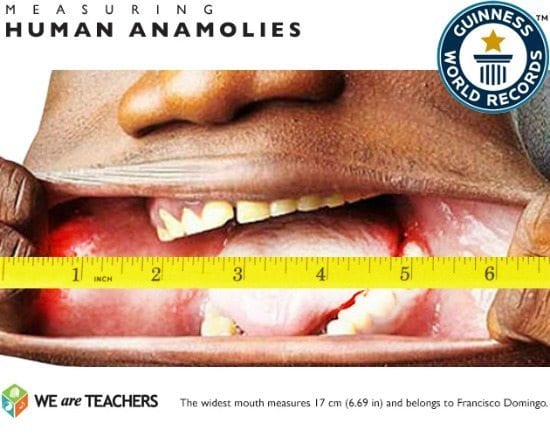
6. Use Sports to Understand Place Value
With sports records, the tiniest one-tenth of a second can make a big difference! Have students collect records about a specific sport and use these to understand place value in the classroom. It’s fascinating when you start looking at how the differences can be so small.
What it teaches: Place value.
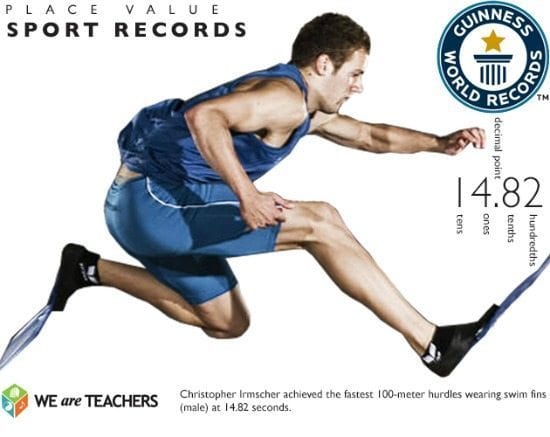
7. Round Up Group Records
There are some cool (and downright unbelievable) examples of group records out there. For instance, the largest number of people dressed as Superman is 867. Students can look up these funny facts, and then round up to the nearest tenth or hundredth.
What it teaches: Rounding up.
8. Write Your Own Word Problems
Human speed, animal speed, car speeds—these are all good facts to find and compare. Have students write word problems based on records centered around speed. They can calculate how long it would take to get places (New York City to Miami, for instance) based on a specific example.
What it teaches: Critical thinking, understanding word problems.
9. Calculate Calories
You can find dozens of records related to food and eating. Did you know the most hamburgers eaten in three minutes is 12? Have students look up these interesting facts and then calculate how many calories were consumed!
What it teaches: Understanding calories, making calculations.
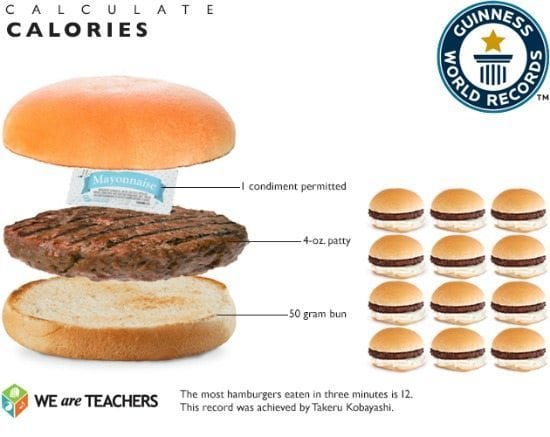
10. Have a GUINNESS WORLD RECORDS Day Challenge
Did you know November 17, 2016, is GUINNESS WORLD RECORDS Day? On this day, all over the world, millions of people take part in the GUINNESS WORLD RECORDS philosophy of record-breaking. During your challenge day, you can have your students research math-themed records. They can discover the largest math class (3,611) or the largest online math competition (more than 1.2 million participants). Then take a cue from some of the math records like fastest time to complete long-standing math problems, and put together some of your own classroom challenges. Create stations throughout your room with multiplication, division, subtraction and basic addition. Have students challenge and time one another, keeping track of how many problems they can get to in a minute. To add to the fun, have them predict how many they think they’ll be able to answer. Then let them compare their predictions to the actual results so it’s more of a personal challenge rather than a competition among students.
What it teaches: Calculations, understanding time management, predictions.
11. Make a Math Problem From a Record
Let students go through and pick their favorite facts—don’t put any limitations on them. After they find it, have them write an addition, subtraction, multiplication or division question in order to get the right answer. For example: What’s the largest number of eggs someone has crushed on their head in one minute? The answer is 2 x 71.
What it teaches: Multiplication, division, subtraction, addition.
